Are you a good distance from the nearest NBN FTTN node? Is your FTTN phone line old, poor quality copper?
If your home or business has a NBN Fibre to the Node (FTTN) connection there are several factors which can have an impact on how fast you can connect to the Internet and how stable your connection will be.
4 Factors That Determine Your NBN FTTN Speed
Distance from the node
The 1st factor is how far away your location is from the place where the NBN optical fibre stops at a node that connects to old Telstra copper lines. You can’t control this unless you specifically buy or rent a place that’s near a FTTN node (and yes, before you ask, there’s people for whom this is a specific criteria).
Quality of your internal phone cabling
The 2nd factor is the quality of your internal phone cabling and how many sockets there are. Generally speaking the older your internal phone cabling is and the more sockets there are in the walls, the slower and more unreliable your FTTN connection will be.
If you own your own home you can control Factor 2 by paying a registered cabler to remove all but one phone socket, and redo the internal cabling so you end with one socket in the optimal location.
However as renters will know, landlords and building managers take no responsibility for (and care very little about) internal phone wiring, so you’re stuck with whatever is there and can’t change Factor 2.
The quality of your lead-in cable also affects FTTN speeds, and while this isn’t necessarily your cable to fiddle with, you can – in the case of very poor performance – ask NBN to remediate the lead-in cable.
Length of cable to modem/router
The 3rd factor is how long the phone cable is between your wall socket and the NBN FTTN modem/router. Both home-owners and renters can improve factor 3 by running a very short phone cable between your NBN modem/router and the wall socket.
Better yet, use the one supplied with your modem/router, and don’t run it near / across power lines to avoid any potential interference.
Which NBN FTTN modem/router you use
The 4th factor is which NBN FTTN modem/router you connect to your wall socket, and that’s what we’re talking about in more detail here.
Some NBN Internet service providers force you to use their own modem/router otherwise their technical support won’t help you. However there are other flexible NBN providers like Aussie Broadband and Launtel which will help you even if you choose your own modem/router.
If you do get to choose your FTTN/FTTB modem/router, interestingly the most important part of the specifications is the VDSL2 chipset – something you won’t see labelled on the retail box.
There are several VDSL2 chipset manufacturers but the short story is Australians should choose a Broadcom chipset. Avoid any modem/router with a Realtek, Mediatek or Intel Lantiq chipset, as they are less adept at dealing with challenging copper lines.
However in a few cases even Broadcom chipset modems can struggle with a particularly bad FTTN line.
Real life FTTN/FTTB modem/router testing
As a side note, NBN Fibre to the Basement (FTTB) connections used in many apartment blocks are (effectively) the same as a FTTN connection – the difference being there’s fibre to your basement / comms room instead of to some node up the street. This is good, because the copper run is usually shorter.
If you’re lucky and your building’s internal phone cabling is good quality, you could see some decent performance with FTTB, up to the full NBN 100 speeds, especially if your apartment has only one phone socket. If you have multiple sockets, it might be a good idea to get as many of them disconnected and made safe as possible.
If you’re unlucky – like me – you move into a rental apartment and find that the internal wiring is not good quality and there are 3 phone sockets. In this case, your NBN performance will be less good.
The only modem/router I had handy at the time was a really old Fritzbox 7390 with a Ikanos chipset from back in the day when I used ADSL.
The Fritzbox does support NBN FTTN (or VDSL2, technically) but only if the line is really really good quality. I found that the modem connected at 92 down/44 up but then it disconnected and had to reconnect every few hours until the connection speed was 80 down/44 up and even then it disconnected several times a day.
Then I tried a more recent Netgear Nighthawk D7000v1 (Broadcom chipset) which someone I knew nearby had spare. Surprisingly it too struggled to keep a solid connection up.
Finally I had a chat with tech journo friend Krishan Sharma who had completed the massive task of reviewing over two dozen FTTN modems.
Krishan suggested I try the D-Link DSL-2888A Phython modem/router which had achieved the second fastest FTTN download sync speed in his tests.
Sydney was still in its first lockdown period at the time so I couldn’t travel around the city looking for a shop that had the DSL-2888A in stock. Luckily a contact at D-Link was able to find a spare previously used unit that wasn’t needed in their test lab and they couriered it over.
Should you buy the D-link DSL-2888A Python FTTN/FTTB modem/router?
After setting up the DSL-2888A I’ve experienced a total of two times during the last 9 weeks when the modem has lost the connection and dropped out for 2-3 minutes while it reconnected.
This improvement in reliability compared to the other modems has been like night and day which is really important at a time when family members and myself were working from home Mon-Fri.
As a bonus, the Triductor chipset in the DSL-2888A also managed to connect and hold a faster FTTN synch speed than the other modems maintaining 95 down/44 up.
Anecdotally, comments from other DSL-2888A owners state that they managed to achieve better connection speeds on bad FTTN lines with this Triductor chipset modem/router compared to other Broadcom modem/routers they’d already tried.
Since the DSL-2888A was launched a few years ago it’s Wi-Fi capability is a bit behind with dual band (300Mbps for 2.4ghz and 1300Mbps for 5Ghz).
That may be good enough for you if you live in an open plan apartment or small house with less than 15-20 Wi-Fi devices but you might need a stronger newer Wi-Fi system in a bigger home eg: the D-link COVR-C2202 Mesh Wi-Fi Triband AC2200 I reviewed a few months ago.
The conclusion to this review is that if you want fast stable FTTN NBN the D-link DSL-2888A modem/router is a great value solution, and did wonders for my connection.
It’s much cheaper than the FTTN high end modem/routers available, so you’ll have plenty of money left to choose the best Wi-Fi mesh system or ethernet connected access points to suit your home layout.
Do note, though, that the D-link DSL-2888A doesn’t have a NBN landline VOIP phone socket, if you need that capability, you should buy the D-link DVA-2800 TalkBox2800 which has exactly the same Triductor chipset as the DSL-2888 but adds a NBN landline VOIP phone socket at the back.
The D-Link DSL-2888A Phython modem/router is available for $199 from AusPCMarket and Computer Alliance or a bit more at other retailers such as The Good Guys.
How’s your NBN?
Disclosure Statement
D-link has allowed Ausdroid to retain the Python 2888a as it was a pre-used unit they had spare in their local lab

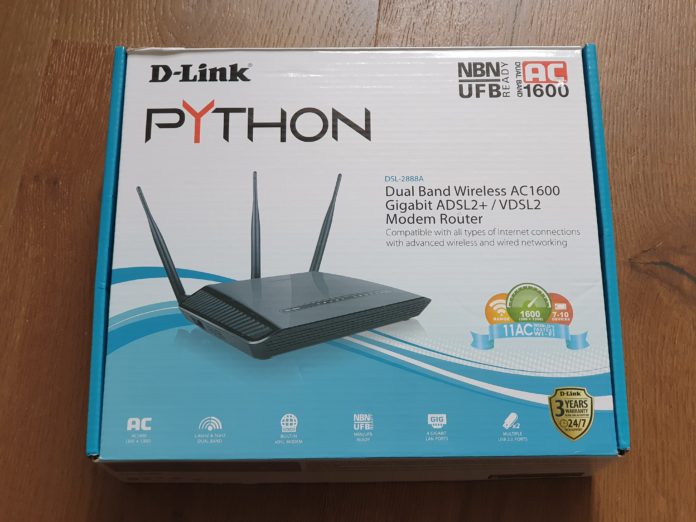
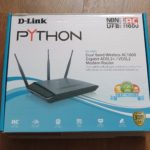



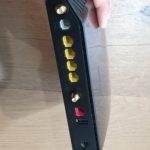
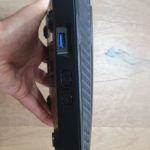
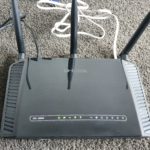
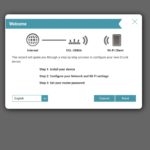

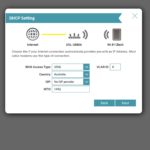


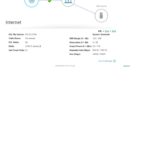



Thanks, guys!
I have FTTN connection at my place and was clocking 74Mbps down using the modem Telstra supplied but my connection would drop out regularly! I ordered a DSL-2888A after reading this article which arrived today. Just set it up and i am now clocking 87.5Mbps down! Uploads hasn’t made a big difference but download has 🙂
Great article! Thank you.
That’s great news Varun, an 18% improvement in speed. Glad I could help
Just thought i would add this image so other could see the difference in speed. the one on top is after the modem swap. Uploads have dropped a bit but i am not too fussed!
I have one of these, it’s the biggest piece of shit I have ever paid money for. I constantly need to switch it off and back on.
I really wish people would stop recommending electricians to do what only authorised telecommunications technicians can do. Anything related to NBN has to have vast communications experience and have NBN specialised endorsements. Electricians majority of them don’t even hold an ACMA licence. The amount of work Ive received this year alone is because of poor or illegal workmanship from electricians or NBN technicians. And I would also not recommend a mesh system in any house. They are basically just wifi repeaters with a dedicated wifi backhaule. If you want to get stable constant connections with no speed loss you’ll need… Read more »
Like he said!
I’ve been stewing for two days over the reference to ‘electricians’, in the context of rectifying internal phone cabling. I’ve specifically returned to this page to make the sort of comment that Matt has – thankfully – already made.
Thanks for your otherwise great article Neerav, but in Australia only Registered Cablers are permitted to perform such work. It’s legislated, and administered by the ACMA.
An electrician isn’t necessarily a Cabler – in fact, most aren’t.
On a separate issue, I also agree with Matt about the use of mesh systems and repeaters. Cabled APs FTW!
Good points Matt and David
I’ve changed the word electrician to registered cabler
On the point of cabled access points being better, sure if a person owns their house and had the budget to pay for a cabler to connect the important rooms via Cat6.
I’m about to pay to do that myself but not everyone is so lucky. Plenty of renters have no choice but to use mesh
Why would you waste money on an AC router in 2020? You should be getting an AX or AXE router unless you dont use wireless.
Did you read the article David?
The point was that Wi-fi is easy with a dedicated mesh system, on a bad FTTN copper line getting a FTTN modem that can work reliably and connect quickly is hard
Which imaginary WiFi 6E router do you recommend for this use case scenario?
Because they received money to promote this router. That’s it, lol. For FTTN/FTTB connection, do change ISP’s modem to bridge mode and connect to an advanced router like Mikrotik hex (less than $100) and then connect to the Redmi Ax5 ( switch it to AP mode) for wifi 6 (mesh supported. You will have a best wifi 6 combination with mesh supported for less than $100 and they are stable for 100 simultaneously connections. This combination (mikrotik hex+redmi ax5) is being used in heaps internet cafe shop/restaurants in Vietnam
Like David you didn’t actually read the point of the article
If the FTTN copper line is crap you need a modem that can negotiate a stable fast connection
The ISP’s “free” included modem you recommend using would be useless in this circumstance
Great article Neerav.
Totally agree, Chris.
“You can’t control [distance from the node] unless you specifically buy or rent a place that’s near a FTTN node (and yes, before you ask, there’s people for whom this is a specific criteria).”
We are looking to buy a new house and have ruled out several properties for this exact reason. Our current connection maxes out at 39 Mbps due to distance from the node and we are not having that rubbish again. Unfortunately, as almost none of Newcastle has FTTP the FTTN lottery is very real.
Internet speeds were definitely a requirement for me when my Wife and I were looking for a new block to build a house last year. FTTP was a requirement for me and there was no bargaining on that 😉
Typing this on my 100/40 ABB FTTP connection and ready to hit the upgrade button for 1000/50 shortly with the purchase of a new router to handle things 😉
There is only one suburb in Newcastle with FTTP, and it isn’t where we want to live. So stuck with FTTN now matter what. We’re looking for a house as close as possible to the node and I’m willing to pay for the FTTP upgrade if necessary. Just need to convince the wife… 😂
Totally understand your search process
We were house hunting recently and FTTP was our priority with HFC as second prize choice since NBN has enabled higher speeds on it.
I cringe when I read about FTTN :/ I feel for you guys stuck with it, especially those with really low sync speeds and constant drop outs, which isn’t that uncommon due to crappy/aging copper.
I’ve never been a fan of D-Link modems and routers to be honest, but this does seem to be a solid unit for those after some stability paired with good speeds.
Slight spelling mistake here btw 😉 “but the short story is for Australiais you want something with a Broadcom chipset”
Cheers
Thanks I just fixed it. Bit of a word mess caused by Dragon Dictate